How to track Facebook Ads in Drift
Here's how to capture Facebook Ads data every time someone starts a new chat in Drift, so you can easily see how many leads and customers are coming from your ads.
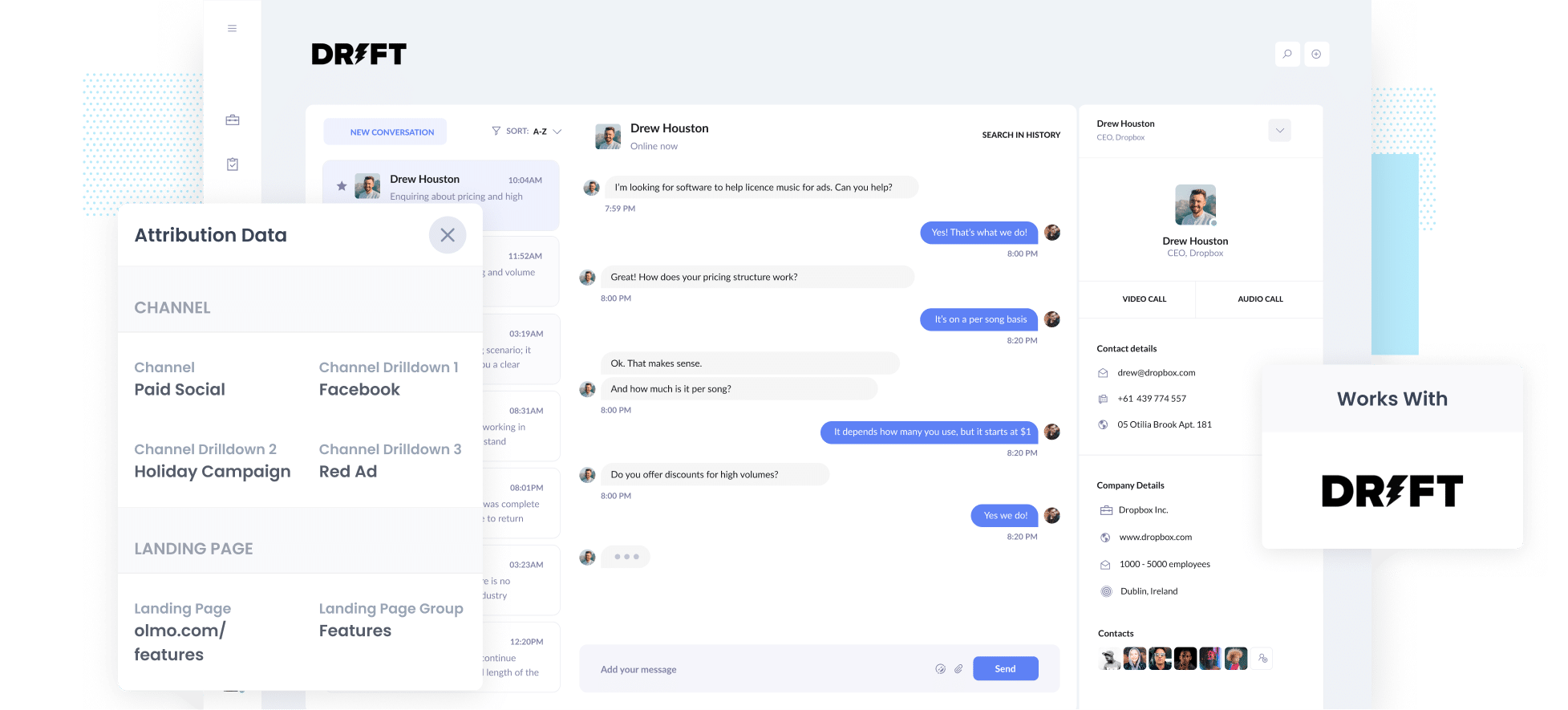
Running Facebook Ads is a great way to bring more visitors to your website, but figuring out which ads are actually driving leads and customers can be tricky. It can sometimes feel like you are just throwing money at campaigns without really knowing what is paying off.
But imagine if you could track where every lead came from, right down to the exact ad they clicked. It would make it so much easier to understand which campaigns, ads, etc. are performing best.
Fortunately, there is a way to do exactly that.
In this article, we will show you how to use a tool called Attributer to capture Facebook Ads data in Drift and send it to your CRM and other tools. That way, you'll be able to run reports that show which campaigns, ads, etc. are generating the most leads and customers.
3 simple steps to track your Facebook Ads in Drift
If you follow these four easy steps, you can start capturing Facebook Ads data every time someone starts a chat on your website (which means you’ll be able to see exactly how many leads are coming from your ads).
1. Add UTM parameters to your Facebook Ads
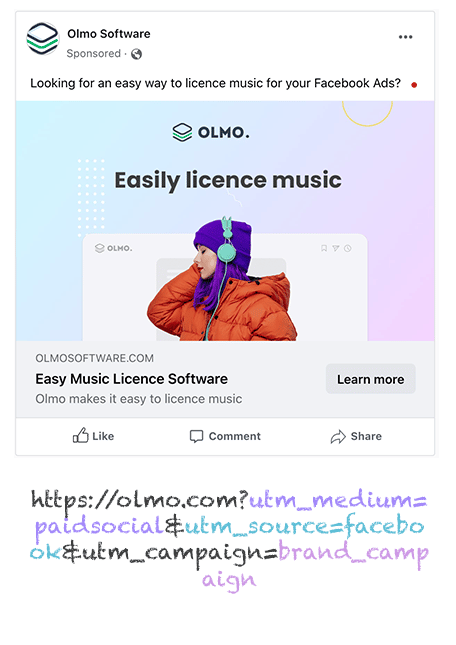
The first step is to add UTM parameters to all of your Facebook ads. If you are not familiar with them, UTM parameters are small pieces of text you tack onto the end of your URLs. They help tools like Attributer figure out exactly where a visitor came from.
For example, if your ad was sending people to a page like attributer.io/integrations/drift, adding UTM parameters would make the link look something like this:
attributer.io/integrations/drift?utm_medium=paidsocial&utm_source=facebook&utm_campaign=brand-campaign
In general, the recommended format for Facebook Ads’ UTM parameters is as follows:
- UTM Medium = paidsocial
- UTM Source = facebook
- UTM Campaign = The name of your campaign
- UTM Term = The name of the ad set the ad belongs to
- UTM Content = The specific ad
2. Install Attributer on your website
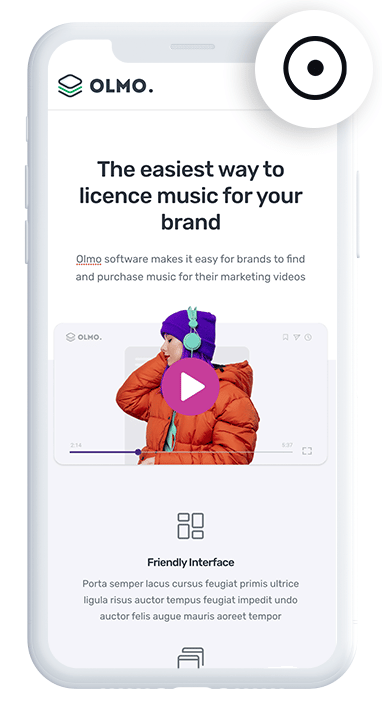
Next up, you will need to get Attributer set up on your website.
When you start your free 14 day trial, we will give you a small snippet of code to add to your site.
How you add it will depend on the platform your site is built on, but we have step by step guides for all the popular website builders like WordPress, Wix, Squarespace, Webflow, and many others. You can find them right here.
3. Facebook Ads data is captured in Drift
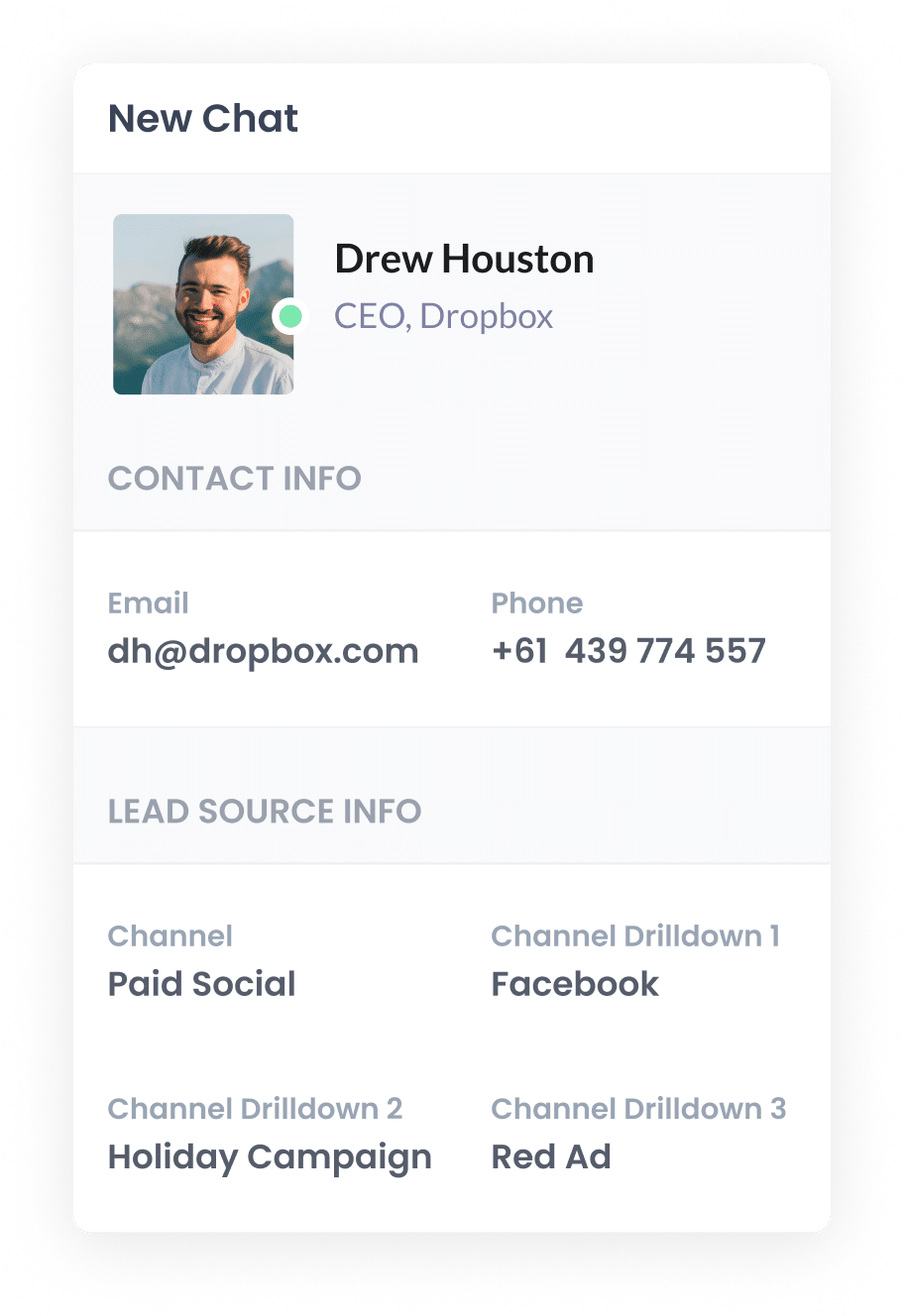
Once you have everything up and running, Attributer will begin tracking where each visitor to your site is coming from, including people who arrive after clicking one of your Facebook Ads.
When someone kicks off a conversation through the Drift chat widget, Attributer will automatically pass details like the campaign, ad set, and ad name (or whatever information you include in the UTM parameters). This info will show up right inside the chat window and will be saved with the lead, so you will always know exactly which ad brought them to your site.
What you can do with the data
Once your Facebook Ads data is flowing into Drift, you can start putting it to work and really understand how your ads are performing.
Here are a couple of simple ways to get started:
- Send it to your CRM - Push the data directly into your CRM, whether that is Salesforce, Hubspot, Pipedrive, or another one you use. Once the data is in there, you can create reports that show how many leads came from your Facebook Ads, how many of those turned into paying customers, how much revenue they generated, and more.
- Export it to a spreadsheet - With a tool like Zapier, you can automatically send the data to Google Sheets or Excel. From there, you can sort, filter, and analyze it however you like. You can even link it to reporting tools like Looker Studio or Power BI to build custom dashboards that make it easy to see exactly which ads are driving results.
Why use Attributer
Attributer is the best option for capturing Facebook Ads data in Drift and sending it to your CRM and other tools. Here are four key benefits that set it apart:
Captures other attribution information
Attributer is not just for tracking leads from your Facebook Ads. It actually keeps track of where every single person who starts a chat on your site comes from.
Whether someone finds you through a Google ad, an organic Google search, clicks a link on social media, or just types your website address directly into their browser, Attributer captures that information and sends it into Drift. This gives you a clear picture of which channels are bringing people to your business and helps you understand what is really driving your leads.
Remembers the data
When a visitor arrives on your site, Attributer stores the UTM parameters from your Facebook Ads directly in their browser.
This means they can browse different pages (or even leave and return another day) and when they finally start a chat, all the original details about where they came from will still be captured and sent to Drift.
Captures landing page data
On top of tracking UTM parameters, Attributer also records the very first page someone visits on your site and groups it by category.
For example, if a visitor lands on a page like https://attributer.io/blog/capture-utm-parameters-drift, Attributer will save the full URL as well as the main section it belongs to, which in this case would be /blog.
This makes it easy to see how many leads you are getting from different parts of your site, like your blog, and even dig deeper to find out how each individual page or post is performing.
3 example reports you can run to understand the performance of your Facebook Ads campaigns
When you start capturing Facebook Ads data with each new chat and send it over to your CRM or analytics tools, you can put together reports that really show what is going on with your ads. You will be able to see which campaigns are bringing in the most leads, which ones are turning into customers, and a whole lot more.
In my 15 years of working in marketing, I have built a ton of reports like this. Below, I have shared a few of my favorites that I think you will find super useful.
1. Leads by channel
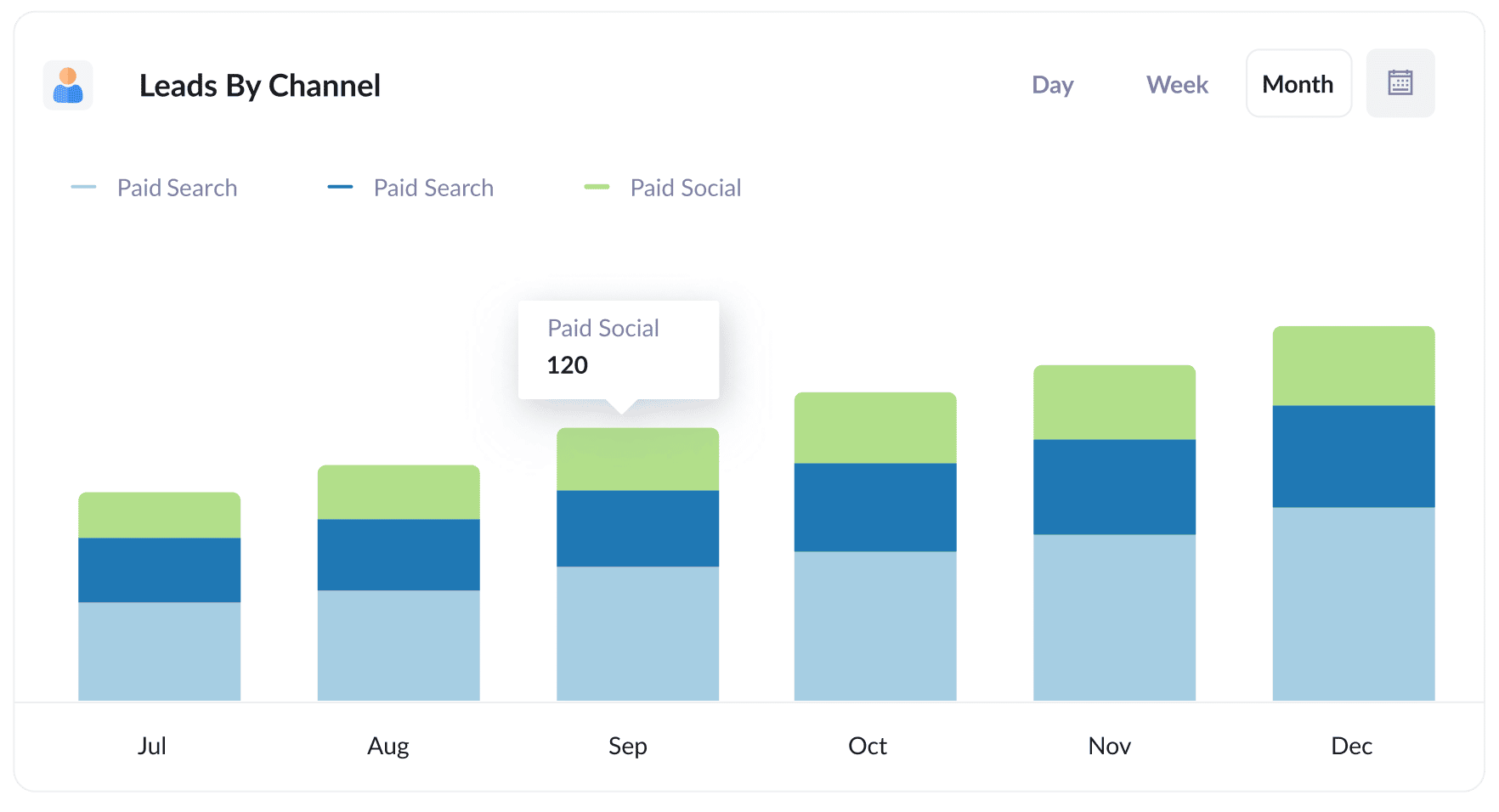
Attributer keeps track of where all your leads are coming from, so you can make reports like the one above that show exactly how many leads each channel is bringing in, whether it is Paid Social, Paid Search, Organic Search, or something else.
This makes it really easy to see how your Facebook Ads are performing compared to your other channels. With that knowledge, you can make smarter calls on where to spend your marketing budget, like putting a bit more into SEO if it is bringing in more leads than your ads.
2. Leads by Network
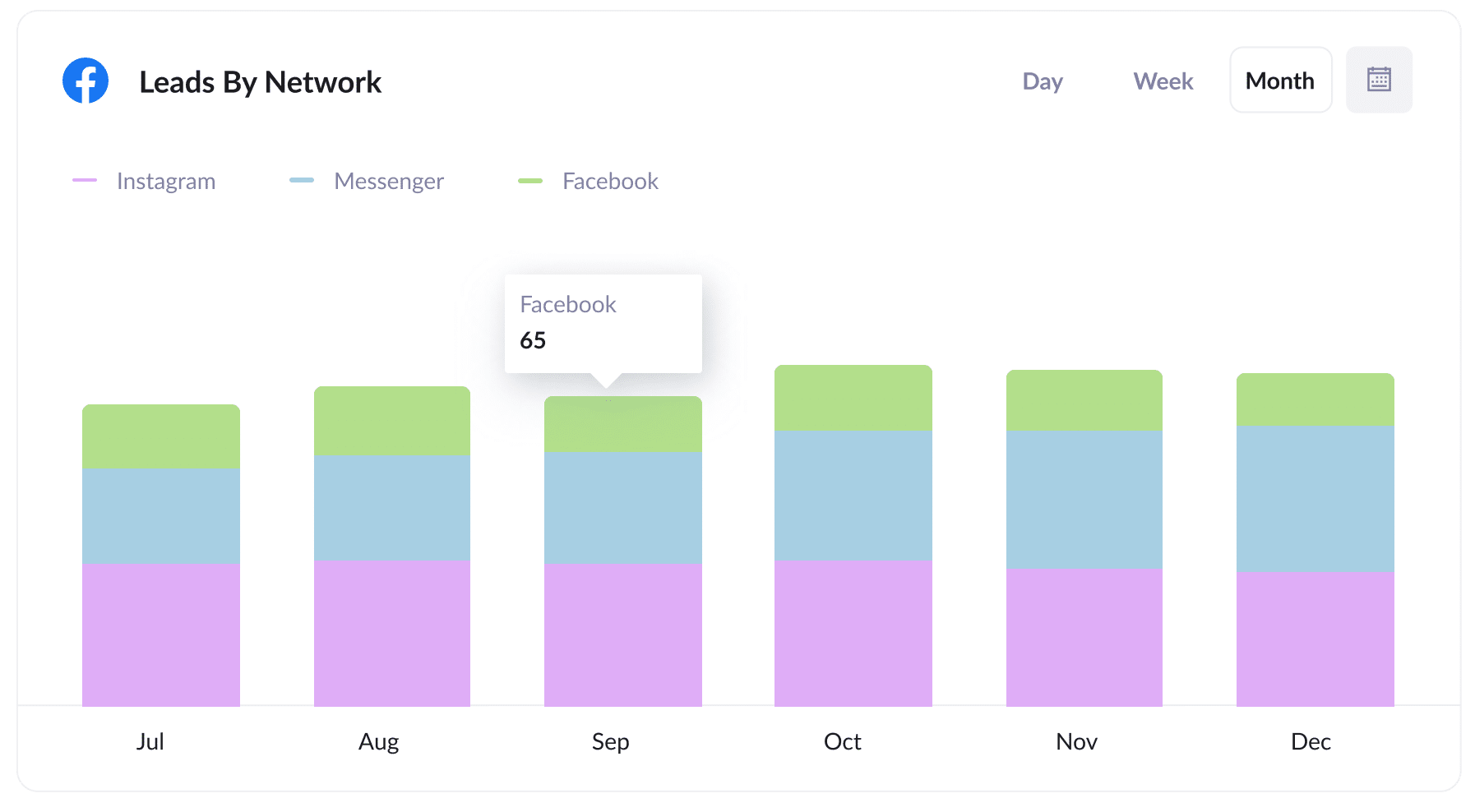
When you run Facebook Ads, they don’t just stay on Facebook. Meta often shows them across Instagram, Messenger, WhatsApp, and a few other places too.
That is why a report like the one above is so handy. It shows you exactly how many leads are coming from each platform, so you can easily see which ones are doing the best job.
With this info, you can focus more of your budget on the platforms that are working and avoid wasting money on the ones that are not performing.
3. Leads by campaign
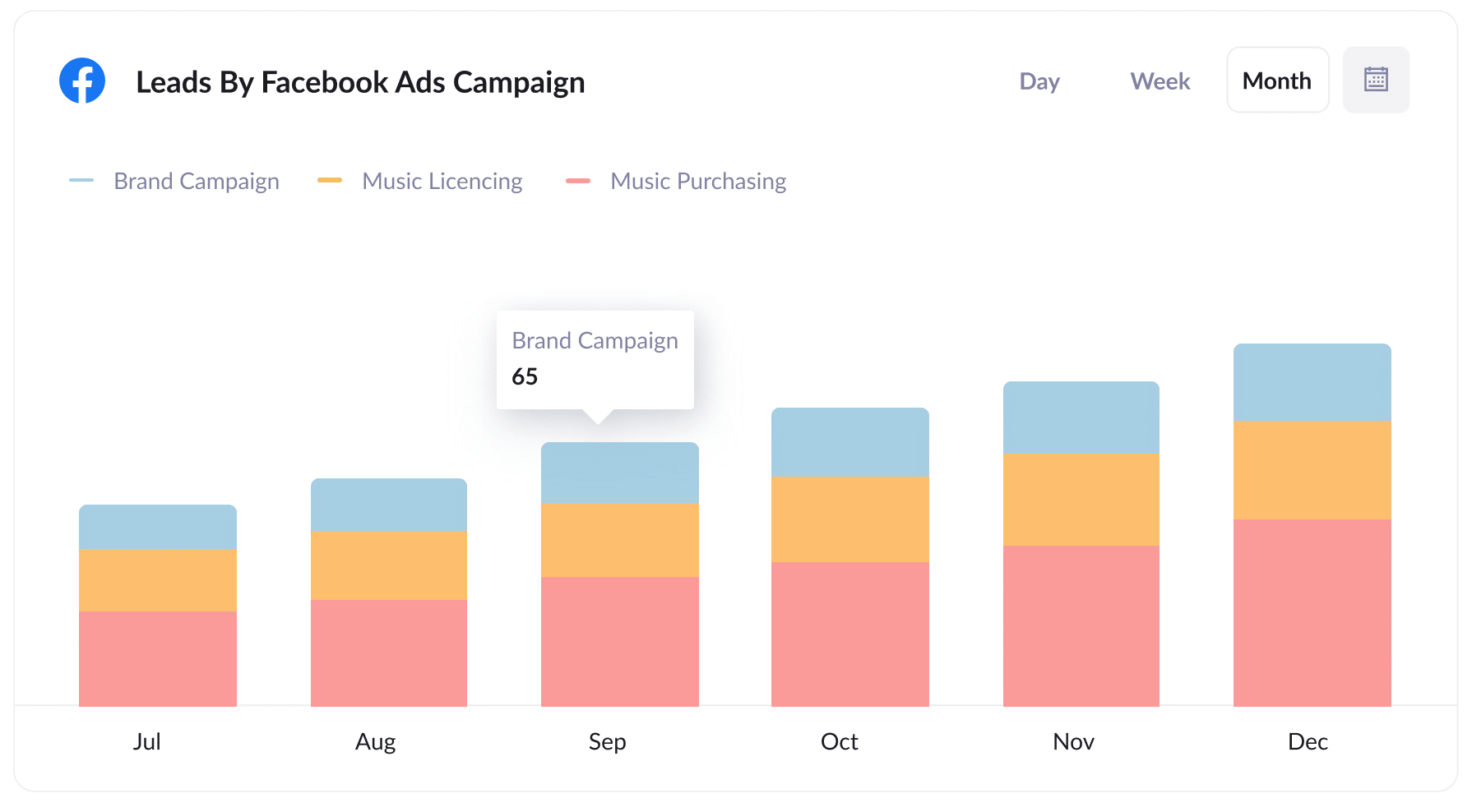
Ever wondered which of your Facebook Ad campaigns are actually bringing in leads? This report lays it all out for you by showing how many leads each campaign brings in month after month.
Rather than just looking at surface level stats like clicks or visits, you will get a clear view of which campaigns are really delivering results for your business.
Wrap up
If you have been trying to figure out exactly how many leads and customers are coming from your Facebook Ads, using Attributer with Drift might be just what you need.
Attributer automatically passes through details like the campaign, ad set, and ad name whenever someone starts a chat through your Drift widget. From there, you can send that data to your CRM or reporting tools and create reports that show which ads are truly bringing in results.
The best part is that it is free to get started and usually takes less than 10 minutes to set up. Start your 14 day trial today and see how Attributer can help you make smarter decisions about where to focus your marketing efforts.
Get Started For Free
Start your 14-day free trial of Attributer today!

About the Author
Aaron Beashel is the founder of Attributer and has over 15 years of experience in marketing & analytics. He is a recognized expert in the subject and has written articles for leading websites such as Hubspot, Zapier, Search Engine Journal, Buffer, Unbounce & more. Learn more about Aaron here.
